TURQUOISE
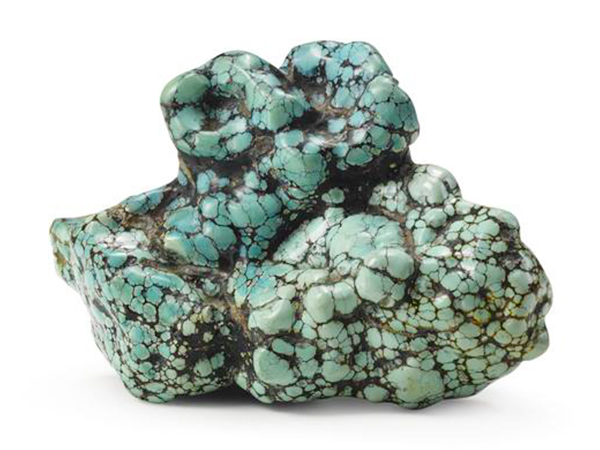
Turquoise reserves are huge, not only in China, Egypt, Iran, the United States, Russia, Chile, Australia, Peru, South Africa, India, Pakistan, Kesmir, etc. have rich and sufficient mineral reserves.
Before the Qing Dynasty in China, turquoise was also known as the "Dianzi". The color is light and elegant, and the beautiful turquoise is a traditional jade that is popular among people of all ages and abroad. It has been worn and used for more than 5,000 years.
In the United States and other Western countries, people regard turquoise as a symbol of the town demon, evil spirits and auspiciousness and happiness. Turquoise is also the birthstone of December in the Western calendar.
Introduction
Turquoise is a high-quality jade material. It was called the jewel of heaven in the Qing Dynasty in China. The ancients called it "Biandianzi", "green stalk", etc., and Europeans called it "Turkish Jade" or "Turkish Jade". Turquoise is recognized as the “December Birthstone” at home and abroad, representing victory and success, and has the reputation of “stone of success”.
Turquoise differs in color depending on the elements it contains. The oxides are blue when they contain copper and green when they contain iron. Mostly sky blue, light blue, green blue, green, green with pale. The color is uniform, the gloss is soft, and the quality of the brown-free iron wire is the best.
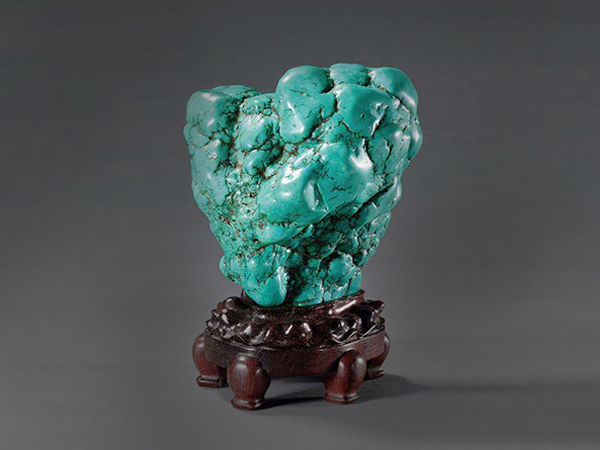
The turquoise texture is delicate and soft, the hardness is moderate, the color is delicate and feminine, but the color, hardness and quality are quite different. Usually divided into four varieties, namely porcelain pine, green pine, foam (face) pine and wire pine.
Turquoise is a phosphate mineral aggregate of copper and aluminum, with the most distinctive features of opaque azure blue. There are also light blue, blue green, green, light green, yellow green, gray green, pale and other colors.
The hardness is generally 5-6, the density is 2.6~2.9, and the refractive index is about 1.62. Under long-wave ultraviolet light, it can emit light green to blue fluorescence.
Turquoise is one of the ancient gemstones. It has a splendid history of thousands of years and is very popular among people of all ages. Before 5500 AD, ancient Egypt mined turquoise on the Sinai Peninsula. During the first dynasty, the Egyptian king sent a labor force of two or three thousand people who were well-organized and guarded by the army to find and mine turquoise. Archaeologists discovered the Egyptian tombs and found that the Egyptian king had worn turquoise beads as early as 5500 BC.
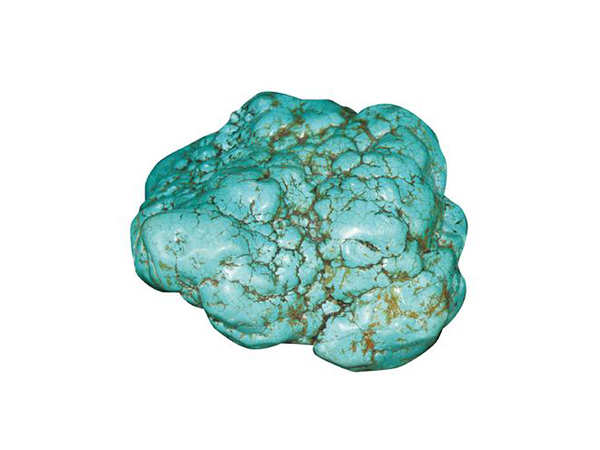
According to expert research, the famous Hessian in Chinese history is made of turquoise. This piece is directly related to the idioms such as "value-for-money" and "complete-to-be-to-be-Zhao", and if the treasures that were made by Qin Shihuang to pass the country are really turquoise, then the ancient people's cherished degree of turquoise can be seen.
Physical and chemical characteristics
chemical composition
An aqueous copper aluminate mineral having a chemical formula of CuAl6(PO4)4(OH)8·5H2O. The theoretical composition is P2O5 34.12%, Al2O336.84%, CuO 9.57%, H2O 19.47%. The turquoise produced by nature is quite different from the theoretical one.
The turquoise texture is not very uniform, the color is deep and shallow, and even contains light stripes, spots and brownish black iron wire. The degree of compactness is also quite different. The pores are loose and the pores are dense and hard. Polished with a soft glass luster to waxy luster. After the polished high-quality products are like glazed porcelain, it is called “porcelain turquoise”. Turquoise also has the disadvantage that the turquoise is easily faded by heat and is also susceptible to strong acid corrosion. In addition, the lower the hardness of the turquoise pores, the more water-absorbent and fragile defects, so oil stains, stains, perspiration, cosmetics, tea, rust, etc.
May enter the pores, resulting in difficult to remove the color change, so the mosaic The turquoise used is usually sealed with wax. Turquoise is a more delicate jade variety. Whether it is the processing process or the use of the process, you need to be careful. But as long as it is kept clean and free from high temperatures and strong collisions, there should be no problems.
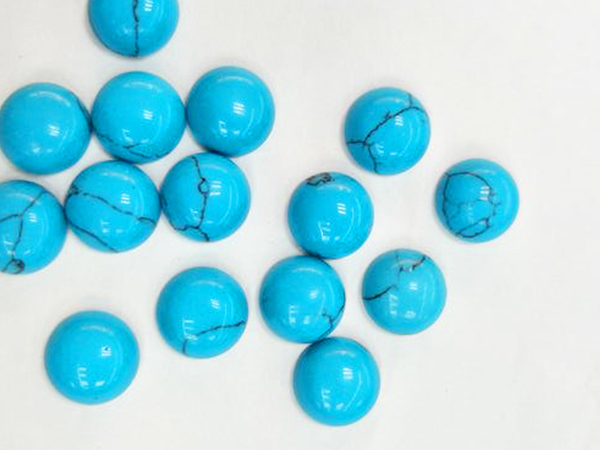
Pure colors such as emerald green and dense structure can be the first choice for high-end art carving. Turquoise is a kind of gemstone that is popularized by both East and West because of its beautiful color.
Gem-grade Wangan turquoise is formed during the geological process, reaching a jade-grade dense block assembly mainly composed of turquoise minerals. This definition emphasizes that it is formed during the geological process, unlike the synthetic Wangan turquoise and other jade.
Turquoise usually presents a dense block, kidney, stalactite, and hull-like aggregates, especially with a unique sky blue or "turquoise color" that makes it easy to see at a glance.
Physical characteristics
Form: triclinic, cryptocrystalline, rare microcrystals, can only be seen under the microscope
Fracture: shell-like to granular (related to pore system)
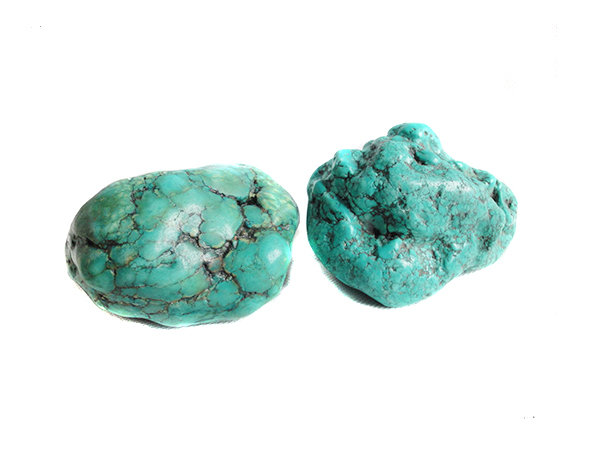
Toughness: white scorpion has low toughness, easy to break, and dense toughness
Streak: white or green
Relative density: 2.4~2.9, standard value is 2.76
Transparency: usually opaque
Gloss: the polished surface is the luster of the grease glass, and the grease is dull and shiny on the fracture.
Inclusions: often black spots or black linear brown or other iron oxide wraps
Refractive index: NG = 1.65, NM = 1.62, NP = 1.61. Since turquoise is often a green aggregate, there is only one reading on the gem refractometer, with an average of about 1.62.
Birefringence: Crystal birefringence (DR) is strong, DR=0.040. But not shown in the gemological test
Optical characteristics: crystal biaxial crystal positive light, 2Y=40. Gemological test data cannot be provided because turquoise is usually opaque
Color: sky blue, very characteristic, so that it becomes a standard color - turquoise. The rest are dark blue, light blue, lake blue, blue green, apple green, yellow green, light yellow, light gray. Copper causes blue, iron can replace part of the aluminum in the chemical composition, making the turquoise green, and the water content also affects the blue color.
Absorption spectrum: Under strong reflected light, occasionally two medium to weak blue regions of 432 nm and 420 nm absorption bands are visible, sometimes at 460 nm, blurred bands are visible.
Luminescence: Fluorescence of yellowish green to blue under long ultraviolet light, short-wave fluorescence is not obvious. There was no obvious luminescence under X-ray irradiation.
Thermal properties: Turquoise is a non-heat-resistant jade that usually bursts into pieces when heated, turning brown, and green under flame. Dry cracking and fading can also occur under the sun
Acid: very slow to dissolve in hydrochloric acid
Turquoise pores develop, so in the identification process, turquoise should not be in contact with colored solutions to prevent contamination by colored solutions.
Source
Main producing area
China is one of the major producers of turquoise. Hubei Zhushan County, Luxi County, Anhui Maanshan, Shaanxi Baihe, Henan Luanchuan, Xinjiang Hami, Qinghai Wulan and other places have turquoise output, among which the high-quality turquoise in the areas of Pixian, Luxi and Zhushan in Hubei is famous in the world. Origin: The turquoise on the Yungai Mountain is named as the turquoise of the Yungai Temple on the top of the Yungai Temple. It is the original stone producing place of the world famous Chinese pine stone carving art. It is well-known in the industry and the collection industry and sells well both at home and abroad. Also. Turquoise is also found in Jiangsu and Yunnan.
In the famous turquoise producing area of Iran, the highest quality porcelain pine and wire pine is produced, which is called Persian turquoise. In addition, Egypt, the United States, Mexico, Afghanistan, India and the former Soviet Union all produce turquoise.
Main mine mouth
(1) Yungai Temple
The Yungai Temple turquoise is divided into three ore-bearing layers: the first ore-bearing veins are mostly blue, green, blue and light blue; the second ore-bearing layer is located 48 meters above the first layer, green The turquoise is mainly green, followed by light green, blue, apple green and sky blue. The third layer is exposed in the northeast of the mining area and has poor mineral content.
The Yungai Temple turquoise mine was once the largest turquoise enterprise in China. The turquoise produced by the mine is also the best turquoise in the world. The output value of the mine can support the county cadres. "Ji County Geology and Minerals" said that since "1954, the state has reclaimed state-owned county-run state-run turquoise mines. From 1954 to 1999, the total output of turquoise was more than 800 tons, with a total foreign exchange earning of 300 million US dollars, and the highest annual output reached 30 tons. The annual output value reaches 12 million yuan." The highest peak of production was in the 1970s and 1980s. There were four or five hundred people in the mine every day, and the output was half a ton to one ton per day. Most of the county’s fiscal revenue came from this mine. On January 15, 1994, the world's largest piece of natural turquoise was produced at the Yungai Temple Mine. It is 82 cm long, 29 cm wide and 29 cm long, and weighs 66.7 kg. It is blue-green, structurally complete and delicate in texture.
In the late 1980s, the resources of the mine became increasingly scarce. The main ore-bearing layers in the eastern and central parts of the mining area were basically emptied above 730 meters. In the 1990s, the western part of the mining area was above 730 meters and the basic mining was also carried out. The mining area is mainly based on the mining of ore bodies and recovered mines in the mining lanes; entering the 21st century, the Yungai Temple State-owned Turquoise Mine eventually went bankrupt in 2005 due to losses in successive years. At this point, the turquoise mining of Yungai Temple has basically stagnated, and its share in the turquoise market is getting smaller and smaller.
(2) Daisy
Daixi is also the main producing area of turquoise. Yaojiapo green skin is a good carving material. The most distinctive one is the number of rapeseed yellow. The mineral yellow is a rare species of turquoise. The academic test is zinc-containing green. Turquoise, and thus produce a variety of green. Only the Chinese Hubei and the United States of Nevada have emerged in the world. Because of their green color, they have been introduced into the competition. The quality of the rapeseed has a high density and high hardness. It is the essence of green, and it is the essence of green. The best, the top of the wenwan!
(3) Mount Jiaojiao
The exact location of Mount Jiaojiao is in Weigou Village, Pankou Township, Zhushan County, Hubei Province. The map indicates that this place is very close to the well-known turquoise overflowing Dongzigou mine in Zhushan County. This seems to indicate that the veins are relatively close, and the quality is also incomprehensible.
The price is more than gold to describe turquoise is not appropriate. At present, the market price of natural turquoise finished products is about 300 yuan to 1,500 yuan per gram, and the highest quality has reached 5,000 yuan per gram or higher.
At present, the materials from the Jiaojiaoshan Mine are mostly hardness and density. Because of the fine texture, the density and hardness are better, the surface of the finished product is more reflective, the iron wire is relatively less, and the play is quicker. Not big, the surface is very strong after the game, similar to jelly.
The real angle mountain iron wire is relatively small, but it is not completely absent. The material selection is cut and polished. The visual effect is basically pure blue to blue green, green blue.
(4) Dongzigou
After sealing the mine at Baoxia Yungai Temple for more than ten years, the high-grade porcelain and high-blue circulating in the market is basically the Zhushan Yishui Dongzigou Mine. In the formation process of Dongzigou Mine, the shipment ratio is more stable. In terms of color, the color of Yungai Temple is more Wulan, and the color of Dongzigou is clearer and tenderer. Gaolan Gao Porcelain in Dongzigou, known as overflow blue in the industry, is because the mine mouth is in Yishui Town, Zhushan County.
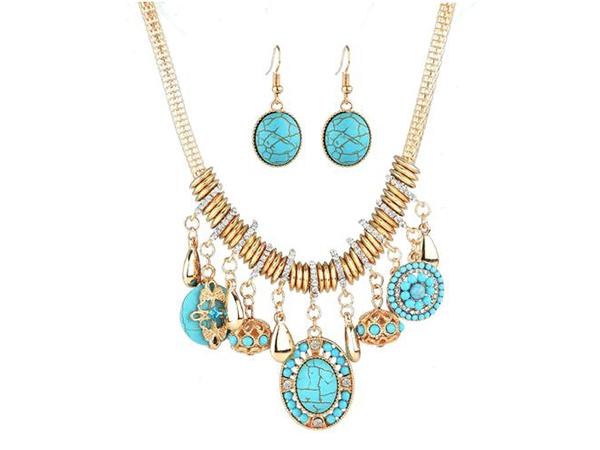
Turquoise is usually classified by origin, color, luster, texture, structure and structure, and many classifications are more or less extended to the quality level of turquoise and thus have a hierarchical meaning.
Foaming: Also known as surface pine, it is light blue to moon white, with a hardness of 4.5 or less. It can be scored with a knife. Because this turquoise is soft and loose, only the larger pieces have a use value, which is the finest quality of turquoise. However, in the increasingly scarce of turquoise raw materials, manual treatment methods such as injection molding, wax injection and dyeing are often used to improve the quality and appearance, and thus "waste utilization".
Pinus sylvestris: There are black limonite veins in the turquoise, which are distributed in a network. The blue or green turquoise is a turquoise variety with black tortoise, net or vein pattern. The limonite veins on it are called "iron wires". The iron wire is slender, the bond is firm, the quality is hard, and it is integrated with the turquoise stone, so that the pine stone has a natural pattern like the ink line, which is beautiful and unique. Turquoise with beautiful spider webs can also be a good product. However, if the netting is composed of clayy fine veins, it is called mudline turquoise. Mudstone is not firmly cemented and has a soft texture, which is basically useless.
International gemstones divide the Wangan turquoise grade: Wangan turquoise is usually classified according to origin, color, luster, texture, structure and structure.
(1) The first grade turquoise grade is the turquoise of the Persian origin;
(2) The secondary turquoise grade is the American grade;
(3) The third-grade turquoise grade is Egyptian turquoise;
(4) The level of turquoise in the fourth grade is Afghanistan, and the turquoise of Afghanistan is the worst turquoise in the international standard.
domestic
According to color, luster, texture and blockiness, the Chinese arts and crafts industry generally divides turquoise into three levels:
(1) First-grade turquoise: It is a bright sky blue, with pure and uniform color, strong luster, translucent to slightly transparent, and a glassy surface. The texture is dense, delicate, tough, without iron wire or other defects, and has a large block;
(2) Secondary turquoise: dark blue, blue green, emerald green, strong luster, slightly transparent. Tough texture, few iron wire or other defects, medium block;
(3) Three-level turquoise: light blue or blue-white, light yellow-green, etc., poor gloss, relatively stiff texture, obvious iron wire, or more defects such as white brain, tendons, and heart, and different block sizes.
Maintenance method
Wangan Turquoise, like other items you cherish, needs to be cherished and maintained. Otherwise, it will be stained by cleanliness, light and dark, and old and new.
Most turquoise has holes that absorb hand oil, lip balm and perfume, although in our traditional crafts, the turquoise surface is coated with a layer of paraffin to increase the color of the turquoise and protect it. The role of turquoise, but should still pay attention to sweat, oil, etc. when wearing, to avoid excessive contact with cosmetics and skin oil, so as not to damage the gem. Due to the porous porosity of the turquoise, it is important to avoid the use of heavy liquid to measure the density when identifying, because tribromomethane and diiodomethane will discolor the turquoise. The turquoise color is delicate and afraid of pollution. Avoid contact with tea, soapy water, oil, rust and alcohol to prevent the pores from penetrating into the gem.
Wangan Turquoise is afraid of high temperature and cannot be directly fired and exposed to direct sunlight to avoid fading, cracking and cracking. Long-term exposure to large sunlight can cause cracks and fading of turquoise due to water loss. Too high temperature baking will make the turquoise crush and brittle. Some Indian handmade jewellery is beautifully made and the repair costs are expensive. However, silver has a high thermal conductivity. When repairing silver jewelry, the temperature is difficult to control, and the turquoise embedded in it will be broken due to excessive temperature. Because those stones are bonded to metal materials.
Turquoise hardness is not large, should avoid collision with other hard-wearing jewelry or items when wearing. Do not put turquoise in an ultrasonic cleaner. On the one hand, the turquoise with holes will absorb the solution to fade itself. On the other hand, when it is ultrasonically vibrated, it may be in contact with other jewelry, whether it is a hole or a dense turquoise surface. Damaged.
Process
The technical requirements of Wangan Turquoise are mainly based on color, texture, impurities and block size. Hard, color blue, such as porcelain loose, the block is the special material, the small and medium block is the first grade material; the medium hardness, the color from the blue to the bean green, such as the green pine and the beautiful net wire pine, the large block is For the first-grade materials, the small and medium-sized blocks are the secondary materials; the other materials that can be used are the tertiary materials; the second one is the “face” loose, which can only be used after it is large or processed. The statue of "Li Shizhen collecting medicine" in the Hubei Hall of the Great Hall of the People is carved from turquoise. Turquoise jade carving crafts are one of China's unique export jade carving varieties, and enjoy a high reputation in the international market.
Modified Wangan Turquoise
In order to improve the appearance and color of some poor quality natural turquoise, improve durability and make it easy to grind and polish without being broken, it is usually modified by wax injection, injection molding, etc. This practice is generally recognized by the jewelry industry, after all, the quality of turquoise is too small. The main ingredients of the modified turquoise are still natural, but after the upgrading process.
Commonly used upgrade methods are as follows: wax injection - because turquoise is a kind of gemstone with low density, wax injection can fill the tiny pores on the surface, avoiding the pollution of turquoise in wearing, this is turquoise processing. A very old craft, after the wax, the turquoise color will naturally become deeper and more ornamental, and the color texture will become clearer and more beautiful. The turquoise of this process is mostly used for jewelry inlay.
Zachery treatment method - can improve the color of Wangan turquoise, reduce porosity and not add any foreign substances. The treated turquoise shows a blue hue of a "chicken egg." The turquoise treated by this method will have a deep blue enrichment phenomenon near the crack, and the advanced detection method can find the abnormal increase of potassium in the turquoise treated by Zachery.
However, the turquoise that has been improved and optimized, like the South Red Agate and the Red Agate of the Warring States, will age for a long time, so this type of jade gemstone can be worn, but the value is greatly reduced and has no collection value.
Synthetic turquoise
This kind of so-called turquoise, a little natural turquoise ingredients are gone, of course, there is no natural spirituality. If you buy turquoise to get spiritual energy, you can't buy this kind of synthetic turquoise. Synthetic turquoise usually has the following types:
The Gilson method of synthesizing turquoise uses a ceramic process. The blue particles distributed on the shallower substrate can be seen in the magnified view, which is commonly known as the "cheese-wracked wheat" phenomenon. Synthetic turquoise has typical blue tiny particles, sometimes with artificial "iron wires" on the surface.
Dyed hydroxyaluminite is a cheap turquoise imitation, and the simple identification method is pink under the Charles filter.
Glass can also be used to mimic turquoise, but the refractive index values of the two are significantly different. Swirls and bubbles can also be seen in the glass.
A mixture of mineral powders, which are dyed and then cemented with plastic and epoxy resin. Turquoise imitations can also be produced. Heating and pressurization during the production process can produce fractures that can be seen by magnification.
Some people say that the iron wire is natural turquoise, and the iron wire is artificial. In fact, this argument can not withstand scrutiny - if you dig a small piece from the natural turquoise without iron wire, is this piece not natural? On the contrary, artificial turquoise is also easy to imitate the effect of iron wire. Therefore, the iron wire is not a standard for the authenticity of turquoise. However, Qingqing introduced to you a experience in identifying turquoise, which is also related to the iron wire, that is: the natural turquoise iron wire is often concave, and the synthetic turquoise wire is generally not concave.
In general, high-quality turquoise, which is suitable for grinding and not easy to break, is very rare. Therefore, if you see a turquoise bracelet that is polished into beads or other specific shapes on the market, it will not be purely natural, it may be modified. Or it may be synthetic. Only some turquoise bracelets that retain the natural irregular shape and have iron-lined depressions can be judged to be purely natural. In addition, the quality of small pieces of natural turquoise is still some, but it is also very difficult and expensive, so don't expect people to use this material as a bracelet, usually used to make rings, and can not see the iron wire. When you identify, you need to be extra careful.
Turquoise patina
The principle of patina: patina, as the name suggests: wrapped in a layer of slurry. So what is the source of this layer of "pulp"? This begins with understanding the ingredients of human palm secretions.
The skin on the human hand secretes two substances: sweat and sebum. Sweat is secreted by the small sweat glands. For turquoise coloring, sweat plays a leading role. Sebum is secreted by the sebaceous glands and it is a mixture. It contains a variety of lipids, mainly saturated and unsaturated free fatty acids, triglycerides, waxes, sterols, squalene and liquid paraffin. Sebum is excreted to the surface of the skin, and a part of it adheres to the hair to moisturize the hair. In addition, most of the sebum and sweat are mixed to form a milky sebum film on the surface of the palm skin. This substance is the predecessor of the package.
Because the milky sebum film contains lipids and waxes, it has the properties of "oil" and "wax". When it comes into contact with the original ore turquoise, it will quickly penetrate into the pores of jade. This process will last for about one month. the above.
During this time, it will feel that the turquoise is discolored and has a strong sense of absorption. Always feel guilty, the jargon is called "biting." After this stage, the milky sebum membrane and the inside of the turquoise will be further affected by the filler. As the water of the mixture gradually evaporates, the milky sebum membrane is reduced to a cortical mixture, in which a variety of lipids enter the deep inner layer of the turquoise, further with the internal dimension. The fusion, while another part of the wax mixture precipitated to the surface of the turquoise, and solidified into a transparent layer similar to the crystal, which is commonly known as "pasting".
As a crystal of a waxy substance precipitated in a sebum mixture, the physical state of the patina is still highly unstable. In the initial patina, in the process of further playing, the newly added milky sebum film will gradually soften the patina. At this time, the surface of the turquoise will feel “tacky” and “returning oil” on the hand. This is a normal phenomenon. . Over time, the surface texture of the turquoise surface wears out, the surface area that the palm can reach increases, and the waxy precipitates on the surface layer continue to undergo extrusion->solidification->squeezing->solidification process with the long-term play. . The intermolecular water is gradually lost, and the degree of solidification is intensified. The whole pinestone is covered by the whole body, and the depth reaches the level of “three points into the wood”. At this time, the turquoise can be called "porcelain pine".
Porcelain can be seen as a hard palate. The fundamental difference between it and the state of palatation is that the porcelain is relatively stable and will not soften due to the addition of a new milky sebum film.
use
High-quality Wangan turquoise is mainly used to make curved face, chest, earrings and so on. For general quality, it is used to make necklaces, bracelets and costumes of various styles. Larger blocks are used to engrave handicrafts, and more are good and beautiful, such as Buddha statues, immortals, cranes, fairies, landscape pavilions, flowers and birds, fish, and beasts. The statue of "Li Shizhen collecting medicine" in the Hubei Hall of the Great Hall of the People is carved from turquoise.
Turquoise is also often embedded in gold, silver, and bronze. The colors are beautiful, and have a national character.
Tibetan and Mongolian compatriots especially love the crafts of turquoise knives, ornaments and other ornaments. In addition, turquoise debris can be used as a pigment. Tibetan doctors also use turquoise as a medicine. Body care
In ancient times people linked it to religion. Tibet is particularly revered for turquoise.
The Mongolian and Tibetan areas like to embed turquoise in matching knives, hats and clothes. It is still a sacred decorative item for religious ceremonies. Most ancient civilizations admire turquoise, such as Egypt, Persia, and Aztec (the Mexican Indians). Long-term wear is detoxifying and clearing the liver.
Turquoise is usually used as a bead. Dimensions range from 8 to 60 mm, either polished or honed. Turquoise can be a primary bead or washer on the rosary with the Buddha's sacred 108 beads.
Many Tibetan societies use turquoise for everyday hair accessories. Nomadic women combed their hair into 108 petals, which were decorated with turquoise and coral. For married women in southern Tibet, the turquoise beads on the hair are essential, and it expresses the wish for the husband's longevity. Not wearing any turquoise on the hair is considered a disrespect to the husband.
In the western Himalayas, Wangan Turquoise and other valuable items are sewn directly on women's dresses or children's hats.
Sometimes the front placket of the entire outer garment is decorated with metal sheets, shells, beads of various materials, buttons and turquoise. The accessories on the child's hat also have a protective effect.
Most Tibetan women also wear necklaces of turquoise beading with other valuables such as coral, amber, pearl and jadeite. Men's accessories are more simplified. Usually, a few turquoise beads are used to string the coral around the neck, or a turquoise bead is attached to the earlobe. Women in Manang, northwestern Nepal, are proud to wear a 70mm long turquoise block with two coral beads on the side. Wearing this piece of jewelry, for the husband who goes out to do business, means that the family is safe.
Amulet containers are an important jewel in Asia. Every Tibetan has one or several such containers to hold a written deed of religion. Protective objects such as cloth pieces or miniature religious figures cut from high-level lama clothes.
This kind of container can be a plain cloth bag, but more of it is a carved gold and silver box, and rarely has no Wangan turquoise decoration. Sometimes a moderately sized turquoise is placed in the center, sometimes with many flawless turquoise and diamonds, rutile and emeralds uniquely placed on the 24K gold ancestral objects.
It is particularly worth mentioning that in Lhasa and central Tibet, a special type of body protector is popular: in the box of the Mandala Bodhisattva and the place where the image is presented, there are two intersecting squares of gold and silver. Turquoise is usually inlaid on the entire box.
legend
In the land of Shangyong Zhushan County, I have been able to pass on the myth that Vulcan and Rongshui have always been in conflict with each other. In a battle, the defeated co-workers ran into the face of the face and slammed the pillars of the North Tianmen. Broken, heavy rains poured from the sky and leaked, and there were many volcanic eruptions on the surface. The cooled magma silted the riverbed and formed a “blocking river”.
In order to save the people from the fire, the female niece collected the aronia as a fuel piled up in the "fire sloping slope", and the sacred stone of the sacred sacred sacred sacred stone was scattered and sewed, so that everything was revived. Later, the allusion of "Working Together to Touch the Mountain" became the origin of the place name of "Zhushan" (the dialect "touch" and "bamboo").
The blocked river in Qinba Mountain is called the river, and the son-in-law uses After the refining of the colorful stone to make up the sky, turquoise is formed. Nüwa is closely related to Zhushan culture: the geological environment of Zhushan is fragile, and the two large fault zones of Qingfeng and Yangriwan traverse the whole territory of the county. According to legend, volcanoes, earthquakes and floods occur frequently, which makes the river blocked, and the ancestors are difficult to survive in the deep waters; Among the more than 10 kinds of folk cultures, such as shadow play, folk songs, paper-cuts, and folktales, you can hear or see the shadow of the son-in-law; there are more than 30 place names related to the son-in-law activities; "The multicolored (Huangbai, Red, Black and Green) stones used in the county correspond to the rich colors of gold (copper), silver, iron, stone coal, turquoise, etc. in the county; more "Historical Records of the Five Emperors" and "Record" More than 10 kinds of classics such as "Kangxi Dictionary" prove that Zhushan is the sacred place of the maiden stone refining...
Famous collection
Forbidden City Tibetan Wangan Turquoise: Wangan turquoise necklace, Warring States, 2cm long, 1.3cm wide, 0.5cm thick.
Turquoise is affected by the discoloration of the old. The whole necklace is made up of 35 flat beads of different sizes, arranged in order of small size on both sides.
This colored stone necklace is mainly popular in the Spring and Autumn Period and the Warring States Period. Most of them are made of crystal, agate and turquoise. These colored stones are generally honed into different shapes and combined on a necklace. The contrasting colors are very beautiful. It was unearthed in Shandong, Henan and other places in China.
This necklace is made only from a material made of turquoise, which is rare. From the perspective of its fine perforation, it shows that the drilling technology has a high level during this period.
Two pieces of turquoise 28cm long fish-shaped ornaments were unearthed in the site of Yangshao Culture (6500-4400 years ago) in Dahe Village, Zhengzhou, Henan Province, China. In Chinese Tibetan culture, Tibetans believe that turquoise is the embodiment of God and also symbolizes power and status, thus becoming the most fashionable sacred ornament. Turquoise was used to decorate the crown of the first Tibetan king and was also used as a offering for the altar. In the history of ancient Persia, turquoise is considered to be a mysterious sinister, and is made into a talisman. Turquoise ornaments have been found in many ancient Persian tombs.
The ancient Indians regarded Wangan turquoise as a holy stone. They believed that wearing turquoise ornaments could be blessed by the gods, and it also symbolized "trust and trust". It also brought good luck and good luck to expedition people. The stone of success. In the West, turquoise is still the birthstone of December in the modern birthstone, which is the constellation stone of Sagittarius, symbolizing success and victory.